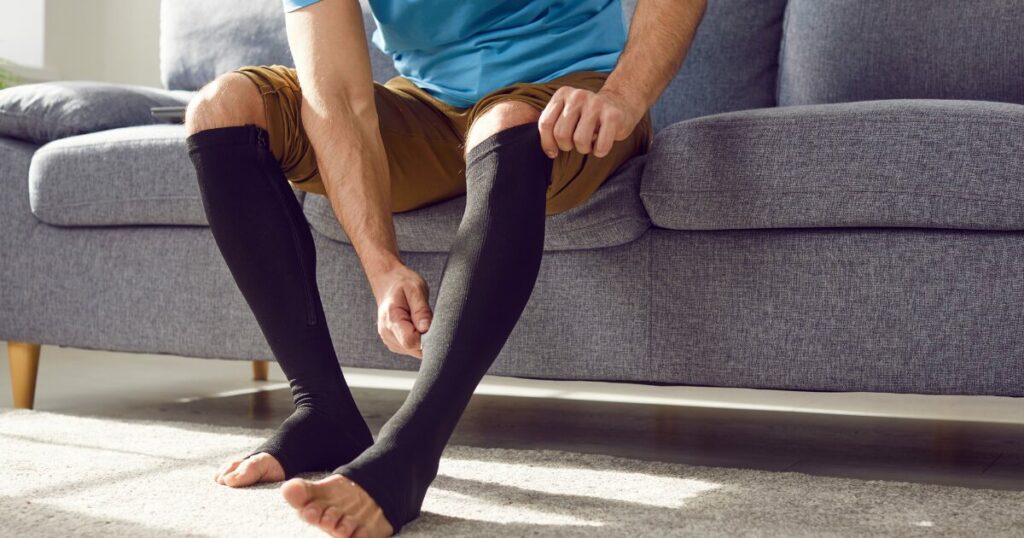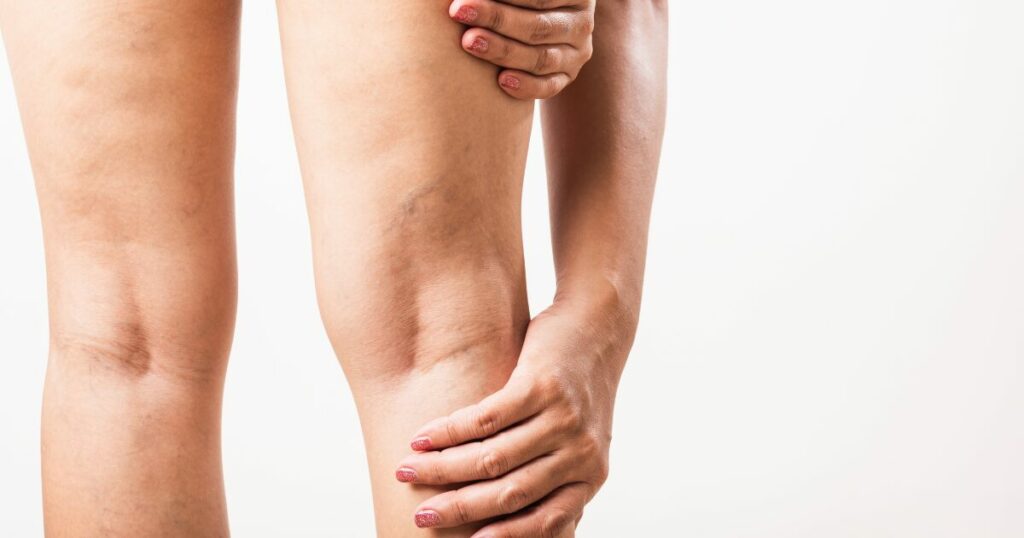Spider and varicose veins not only affect one’s appearance but can also lead to discomfort and health concerns. Sclerotherapy, a widely embraced medical procedure, offers an effective solution. This minimally invasive procedure involves injecting a solution directly into affected veins, prompting them to collapse and gradually fade away.
In this comprehensive guide, we delve into the intricacies of sclerotherapy, shedding light on not just the procedure itself but also the critical question: How long does sclerotherapy last?
Keep reading below to learn more.
What is Sclerotherapy Treatment?
Sclerotherapy involves the injection of a specialized solution directly into affected veins, inducing their collapse and subsequent fading. This minimally invasive treatment has gained immense popularity for its dual benefits—addressing both aesthetic concerns and providing relief.
Ideal Candidates
Candidates for sclerotherapy typically include individuals with varicose veins, spider veins, or other vascular concerns.
Sclerotherapy may not be suitable for:
- Breastfeeding Mothers: Due to potential risks, breastfeeding individuals are generally advised against undergoing sclerotherapy.
- Pregnant Women: It is recommended to wait at least three months after delivery before considering Sclerotherapy.
- Those with Superficial or Deep Vein Thrombosis: Individuals with either superficial or deep vein thrombosis may not be suitable candidates for Sclerotherapy.
- Patients under Bed Rest: Sclerotherapy requires some level of mobility for optimal results. Patients confined to bed rest may not be suitable candidates.
- Birth Control Users: In most cases, individuals on birth control can undergo the procedure unless contraindicated by their primary care physician. However, considerations may vary based on individual health circumstances.
- History of Blood Clots: Eligibility depends on the nature and severity of past blood clots. Individuals with a history of blood clots should discuss their case with a healthcare professional to determine suitability.
Individuals considering sclerotherapy are encouraged to consult with a vein specialist. A thorough examination and discussion of medical history can help determine the most suitable treatment approach.
The Procedure in Detail
Consultation and Assessment
Before undergoing sclerotherapy, a thorough consultation and assessment are conducted to determine the severity of the vein issue and the most suitable treatment plan.
Preparation
The patient is often advised to avoid certain medications and activities in the days leading up to the procedure. This ensures optimal conditions for the treatment.
The Injection Process
During the procedure, a fine needle is used to inject the sclerosing solution directly into the targeted veins. Patients may experience a mild discomfort or a stinging sensation.
Post-Procedure Care
After the injections, patients are usually instructed to wear compression stockings to promote proper blood circulation and healthy veins, as well as enhance the effectiveness of the treatment.
[Related: 9 Things to Ask Your Varicose Vein Doctor About Your Treatment]
How Long Does Sclerotherapy Last?
The duration of sclerotherapy varies among individuals. Typically, patients begin witnessing improvements within weeks to months after the procedure. However, several factors can influence the longevity of its effects:
1. Size and Severity of Varicose Veins
The size and severity of the veins being treated play a role in determining the number of sessions required, thereby influencing the overall treatment duration.
Larger veins or more advanced cases might necessitate additional sessions, extending the overall treatment duration.
2. Individual Healing Response
Each individual’s body heals at a unique pace. Consequently, the rate at which veins disappear post-sclerotherapy can differ.

3. Post-Procedure Care
Adherence to recommended post-procedure care is instrumental in ensuring optimal and lasting results. Your doctor will most likely recommend that you wear compression stockings, maintain an active lifestyle, and avoid prolonged periods of sitting or standing to improve your blood flow.
Make sure to follow your doctor’s post-procedure instructions for safer and faster recovery.
[Related: Sclerotherapy Aftercare: Dos and Don’ts]
Frequently Asked Questions
1. What is the Downside of Sclerotherapy?
While sclerotherapy is generally safe, patients may experience mild side effects. These can include redness, bruising, or itching at the injection site. In rare cases, complications such as blood clots or allergic reactions may occur. It’s crucial to discuss potential risks and benefits with your healthcare provider before undergoing the procedure.
2. How Often Do You Need Sclerotherapy?
The frequency of sclerotherapy sessions varies. While some patients achieve desired results after one or two treatments, others with more complex cases may require additional sessions. The interval between sessions allows for proper healing and assessment of the treatment’s effectiveness.
3. Do Veins Grow Back After Sclerotherapy?
Sclerotherapy has a high success rate in treating existing veins, but it doesn’t guarantee the permanent prevention of new varicose veins. While treated veins generally do not grow back, new ones may develop over time.
Maintaining a healthy lifestyle, including regular exercise and proper leg elevation, can contribute to preventing new vein problems.
4. What is the Success Rate of Sclerotherapy?
Research indicates promising primary and secondary success rates at 36 months for treated veins using sclerotherapy. The majority of patients experience significant improvement in both the cosmetic appearance of their legs and the relief of symptoms associated with varicose or spider veins.

Additional Considerations
1. Preparing for Sclerotherapy
Before undergoing sclerotherapy, patients should communicate any medical conditions, medications, or allergies to their healthcare provider. A comprehensive assessment ensures a safe and effective procedure.
2. Combining Sclerotherapy with Other Treatments
In certain cases, combining sclerotherapy with other treatments such as laser therapy or ambulatory phlebectomy may enhance results. A personalized approach is key to addressing individual needs comprehensively.
3. Potential Risks and Complications
While sclerotherapy is generally safe, it’s essential to be aware of potential risks and complications, including infection, ulceration, or changes in skin pigmentation. Open communication with your healthcare provider is crucial to address any concerns.
4. Lifestyle Modifications
In addition to the procedural aspects, incorporating healthy lifestyle habits can contribute to the overall success of sclerotherapy. Maintaining a healthy weight, avoiding prolonged periods of sitting or standing, and wearing compression stockings as recommended by your healthcare provider are essential aspects of post-sclerotherapy care to improve blood flow and your overall condition.
Consulting a Trusted Vein Doctor Is the Way to Go
Sclerotherapy stands as an effective and minimally invasive solution for those grappling with varicose and spider veins. Understanding the factors influencing its duration is crucial for informed decision-making. While it offers a high success rate, it’s essential to consider individual variations and follow recommended post-procedure care for optimal results.
By consulting with a qualified vein specialist, adhering to post-treatment guidelines, and making necessary lifestyle modifications, individuals can experience lasting relief and improved leg aesthetics. Sclerotherapy not only addresses the visible signs of problematic veins but also contributes to enhancing overall vascular health.
Schedule Your Consultation Today!
If you are considering sclerotherapy and wish to explore how it can benefit you, schedule a consultation with Vascular & Interventional Specialists of Prescott (VISP). Our experienced team is dedicated to providing personalized care, guiding you through the process, and helping you achieve the best possible results.
Don’t wait—take the first step towards healthier, more beautiful legs.
